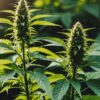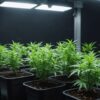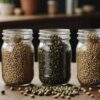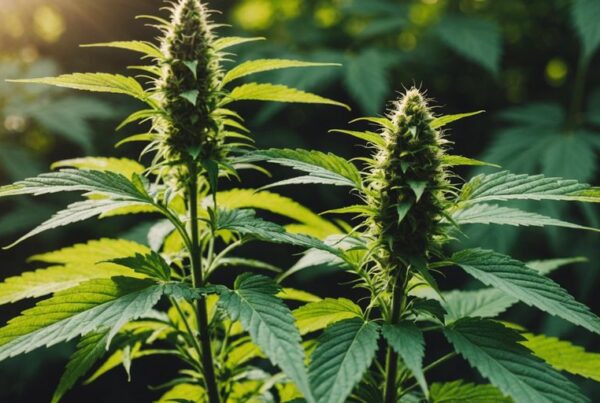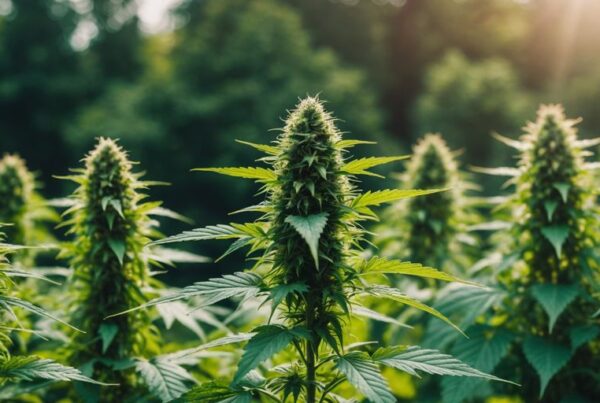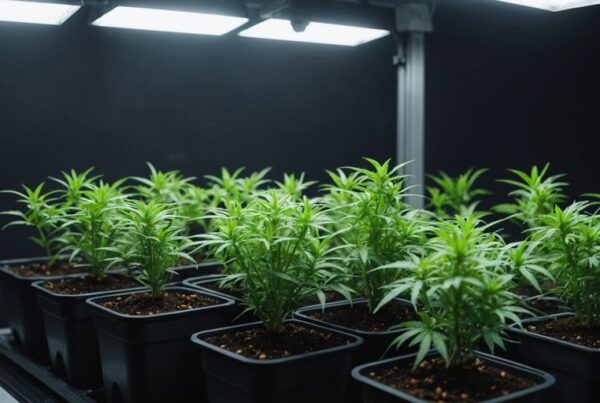Cannabis, a versatile plant with a rich history, has gained significant attention for its medicinal and recreational uses. Understanding its leaf morphology is crucial for cultivators, researchers, and enthusiasts. This article delves into the intricate details of cannabis leaf morphology, exploring the various types, structures, and functions of leaves in cannabis plants.
Introduction to Cannabis Leaf Morphology
Cannabis leaves are a defining characteristic of the plant, with their distinctive shapes and structures. These leaves play a vital role in the plant’s growth, health, and productivity. By understanding the morphology of cannabis leaves, cultivators can better manage their plants and optimize growth conditions.
Basic Leaf Structure
Cannabis leaves are compound and typically palmate, resembling the shape of a hand with fingers extending from a central point. Each leaf consists of several leaflets, which can vary in number depending on the plant’s species and growing conditions.
Key Components of a Cannabis Leaf:
- Blade (Lamina): The broad, flat part of the leaf that absorbs sunlight and facilitates photosynthesis.
- Petiole: The stalk that connects the leaf blade to the stem, allowing the transport of nutrients and water.
- Leaflets: Smaller segments of the leaf blade, arranged in a palmate or pinnate pattern.
- Veins: The network within the leaf blade that transports water, nutrients, and photosynthetic products.
Types of Cannabis Leaves
Cannabis plants primarily fall into three categories: Sativa, Indica, and Ruderalis. Each type exhibits distinct leaf morphology.
Sativa Leaves
Sativa leaves are typically long, narrow, and have more leaflets, often ranging from seven to eleven. These leaves are lighter in color and have a thinner structure, which aids in the plant’s adaptation to warmer climates with higher light intensity.
Indica Leaves
Indica leaves are broader, shorter, and have fewer leaflets, usually between five and seven. These leaves are darker green and thicker, suited for colder climates with less light intensity. The broader surface area allows for more efficient photosynthesis under lower light conditions.
Ruderalis Leaves
Ruderalis leaves are smaller and less distinct compared to Sativa and Indica. They usually have three to five leaflets and are adapted to harsh, temperate climates. These leaves are less significant in commercial cultivation but play a role in breeding due to their auto-flowering trait.
Leaf Development and Growth Stages
The development of cannabis leaves occurs in several stages, each crucial for the plant’s overall growth and health.
Seedling Stage
During the seedling stage, cannabis plants produce their first set of leaves, known as cotyledons. These are small, rounded leaves that provide initial energy for the plant to grow. Following this, the first true leaves emerge, which are single blades.
Vegetative Stage
In the vegetative stage, cannabis plants focus on producing foliage. Leaves develop rapidly, and the number of leaflets increases with each new set of leaves. This stage is critical for establishing a strong foundation for the plant’s future growth.
Flowering Stage
During the flowering stage, the growth of new leaves slows down as the plant shifts its energy towards producing flowers. The leaves near the flowers, often called sugar leaves, are smaller and coated with trichomes, which contain high concentrations of cannabinoids.
Functions of Cannabis Leaves
Cannabis leaves serve several essential functions that contribute to the plant’s survival and productivity.
Photosynthesis
Photosynthesis is the process by which plants convert light energy into chemical energy. Cannabis leaves absorb sunlight through their chlorophyll pigments, converting it into glucose, which fuels the plant’s growth.
Transpiration
Transpiration is the process of water movement through the plant and its evaporation from leaves, stems, and flowers. This process helps regulate the plant’s temperature and maintains nutrient uptake from the soil.
Gas Exchange
Cannabis leaves contain small openings called stomata, which facilitate gas exchange. Stomata open to allow carbon dioxide in for photosynthesis and release oxygen as a byproduct. They also play a role in regulating water loss through transpiration.
Leaf Disorders and Deficiencies
Understanding the morphology and health of cannabis leaves can help identify and address common disorders and deficiencies.
Nutrient Deficiencies
- Nitrogen Deficiency: Causes yellowing of older leaves and stunted growth. Nitrogen is crucial for chlorophyll production and overall plant health.
- Phosphorus Deficiency: Leads to dark, bluish-green leaves and poor root development. Phosphorus is vital for energy transfer and photosynthesis.
- Potassium Deficiency: Results in yellowing and browning of leaf edges, affecting the plant’s ability to regulate water and enzyme activation.
Pests and Diseases
- Spider Mites: Tiny pests that cause speckled yellow or white leaves and fine webbing on the undersides of leaves.
- Powdery Mildew: A fungal disease that creates white, powdery spots on leaves, hindering photosynthesis.
- Leaf Septoria: A fungal infection causing yellow and brown spots on leaves, eventually leading to leaf drop.
Cultivation Techniques for Optimal Leaf Health
Proper cultivation techniques are essential for maintaining healthy cannabis leaves and maximizing plant productivity. Here are some key practices:
Organic Cultivation
Adopting organic cultivation methods can improve leaf health by avoiding synthetic chemicals and promoting natural soil health. Learn more about organic cultivation practices here.
Watering Systems
Efficient watering systems ensure that cannabis plants receive the right amount of water without overwatering, which can lead to root rot and other issues. Explore different watering systems for cannabis cultivation here.
Yield Maximization
Maximizing yield involves optimizing various factors, including light, nutrients, and pruning techniques, to enhance leaf and overall plant health. Discover strategies for yield maximization here.
Choosing the Right Seeds
Selecting high-quality cannabis seeds is fundamental for growing plants with robust leaf morphology and overall health. Learn how to choose the best cannabis seeds here.
Advanced Leaf Morphology: Trichomes and Cannabinoid Production
Trichomes are tiny, hair-like structures on cannabis leaves and flowers that play a crucial role in cannabinoid production. These glandular structures produce and store cannabinoids, terpenes, and flavonoids, which are responsible for the plant’s therapeutic and psychoactive properties.
Types of Trichomes
- Bulbous Trichomes: The smallest type, found primarily on the leaf surface.
- Capitate-Sessile Trichomes: Medium-sized trichomes, more abundant on leaves and flowers.
- Capitate-Stalked Trichomes: The largest and most significant for cannabinoid production, found mainly on flowers but also on leaves.
Importance of Trichomes
Trichomes protect the plant from pests and UV radiation while playing a vital role in the plant’s potency and flavor profile. Monitoring trichome development is crucial for determining the optimal harvest time.
Conclusion
Understanding cannabis leaf morphology is fundamental for anyone involved in cannabis cultivation or research. From the basic structure and types of leaves to their development stages and functions, a comprehensive knowledge of leaf morphology can enhance cultivation practices and improve plant health. By implementing effective cultivation techniques and monitoring leaf health, cultivators can maximize their yield and produce high-quality cannabis.
For further information on organic cultivation, watering systems, yield maximization, and choosing the right cannabis seeds, visit the links provided:
By leveraging these resources, cultivators can ensure they are adopting best practices for healthy and productive cannabis plants.

